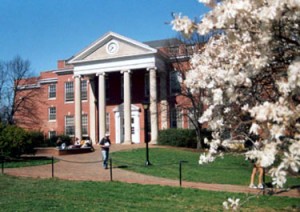 Our university desperately needs a vibrant and modern student center and a new dining facility. Seacobeck and Woodard Campus Center are minimally meeting the needs of our students now, and new facilities will not only improve the quality of life at UMW, but also aid in attracting future students to keep the university strong.
Our university desperately needs a vibrant and modern student center and a new dining facility. Seacobeck and Woodard Campus Center are minimally meeting the needs of our students now, and new facilities will not only improve the quality of life at UMW, but also aid in attracting future students to keep the university strong.
The most critical facility deficiency on campus is the lack of a real central gathering place—a student center— for students and the larger UMW community, and our current dining facility is simply inadequate and not sustainable for the future. Most universities have a robust, centrally and strategically located, active, busy and energetic student center that draws students and serves as the hub for activities. These facilities have many common attributes such as housing student organizations, meeting rooms, auditoriums or theaters, retail outlets, substantial food venues and comfortable open areas for relaxing, visiting and meeting. They are the hub of a vibrant campus community.
With these facts in mind, President Hurley has decided to fast track a new dining/student center. He asked vice presidents Doug Searcy and Rick Pearce to put together a small, representative group to investigate the possibilities and to recommend a site. Assistant Professor Michael Spencer, Associate V.P. for Facilities Services John Wiltenmuth, an independent representative of the architectural and engineering firm Burt Hill that is conducting the UMW Master Plan process, a representative from the state’s Department of Historic Resources, and a UMW student representative made up the search committee.
This committee thoroughly vetted several sites on campus and narrowed the possibilities to two, Seacobeck and Chandler. Both sites provided excellent locations but neither building can be renovated or expanded sufficiently to accommodate a new dining/student center. Additionally, the historic value of the two buildings was examined and discussed at length. Seacobeck clearly possessed the greater value to UMW in terms of its place in the university’s history and in the degree that it maintains its original construction features and integrity. Thus, based on the strong response last fall to the suggestion of demolishing Seacobeck coupled with its historic place in the life of the university, Chandler Hall was the unanimous recommendation of the committee as the site for the new center.
Moving forward, a construction plan of this magnitude will have many impacts that we will have to plan for. Two of the university’s largest academic departments, Business Administration and Psychology, will need to be relocated. This was not included in the original draft Master Plan and will be an enormous undertaking. Committees from both departments as well as the Master Plan Steering Committee will be asked to thoroughly study all available options as part of the planning process. They will consider the short term impacts regarding temporary relocation as well as the long term and cascading effects on other offices and departments.
The web site which is being used to comment on the draft Master Plan will also be the location for comments on this new development. Work on the Historic Preservation Plan continues. The Historic Preservation Steering Committee led by Michael Spencer is expecting to complete their plan in September. This plan will be in place prior to moving forward with the Master Plan.